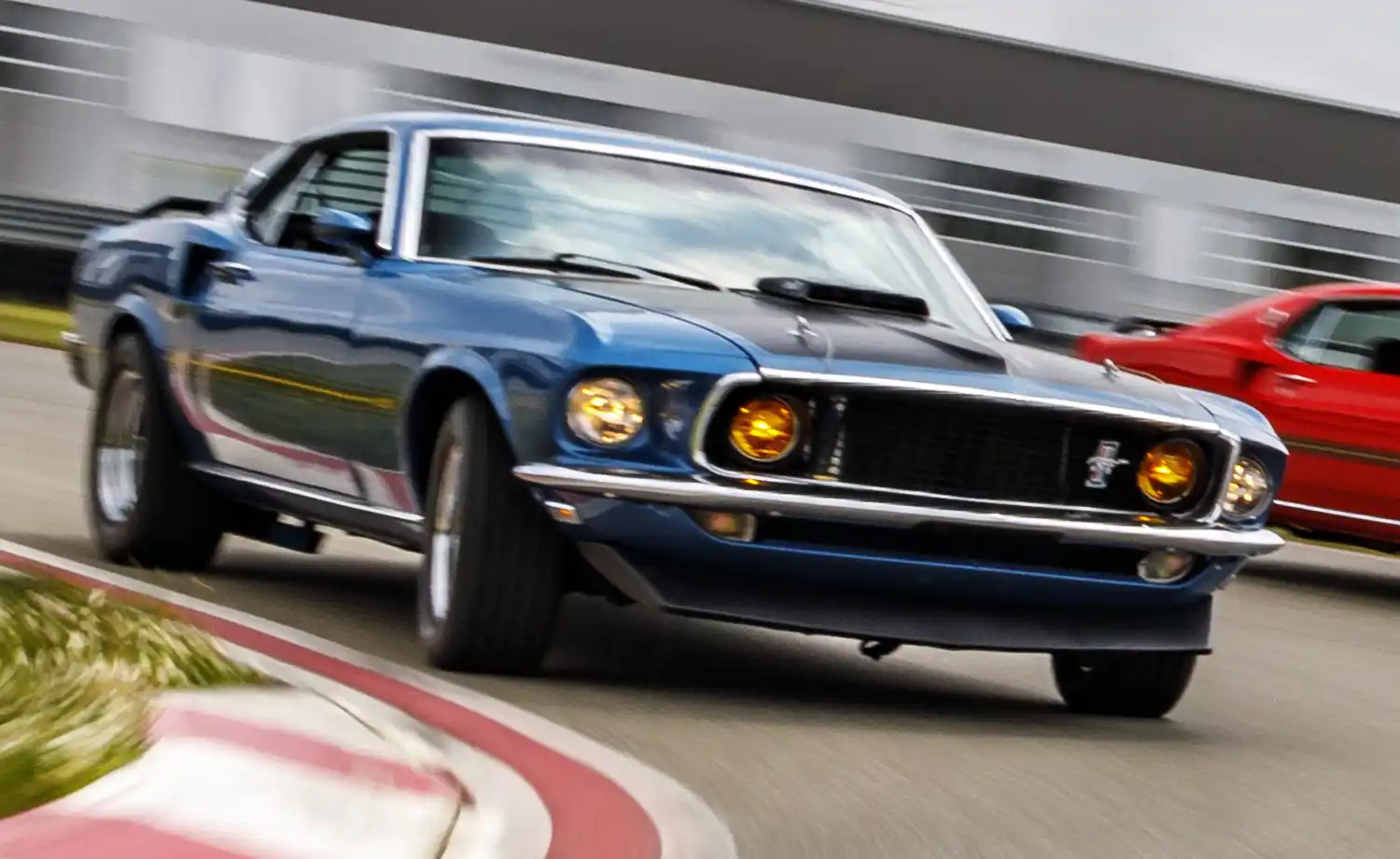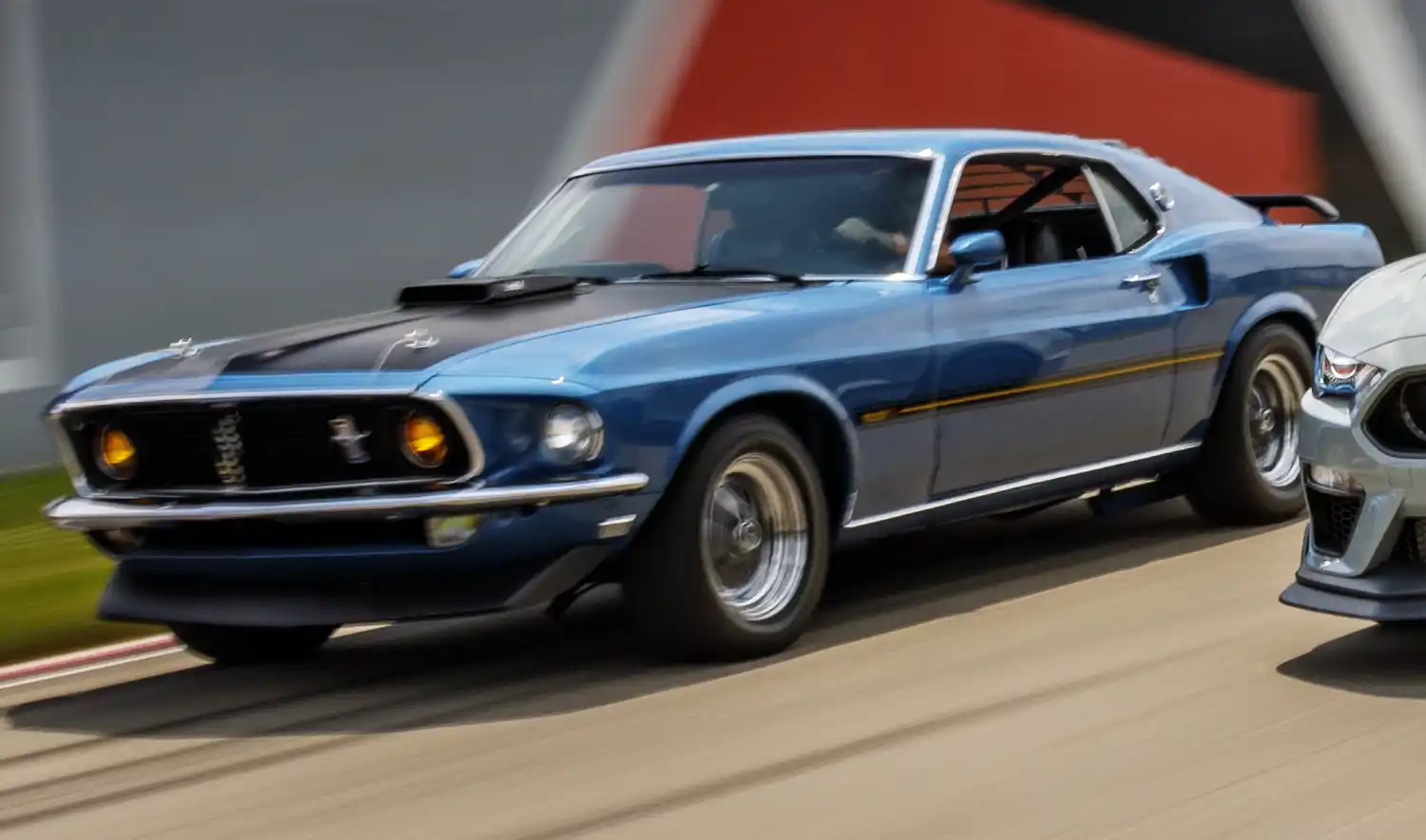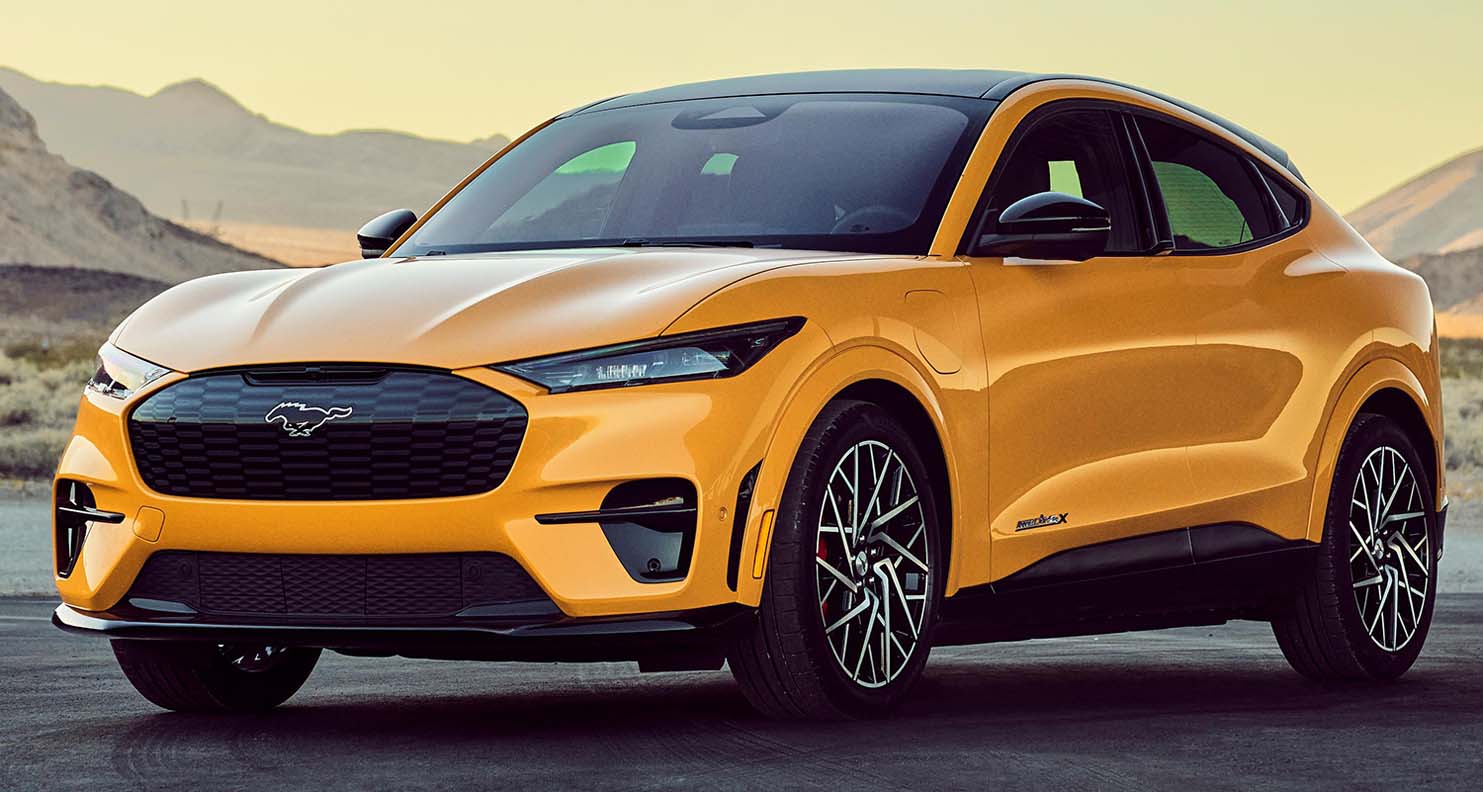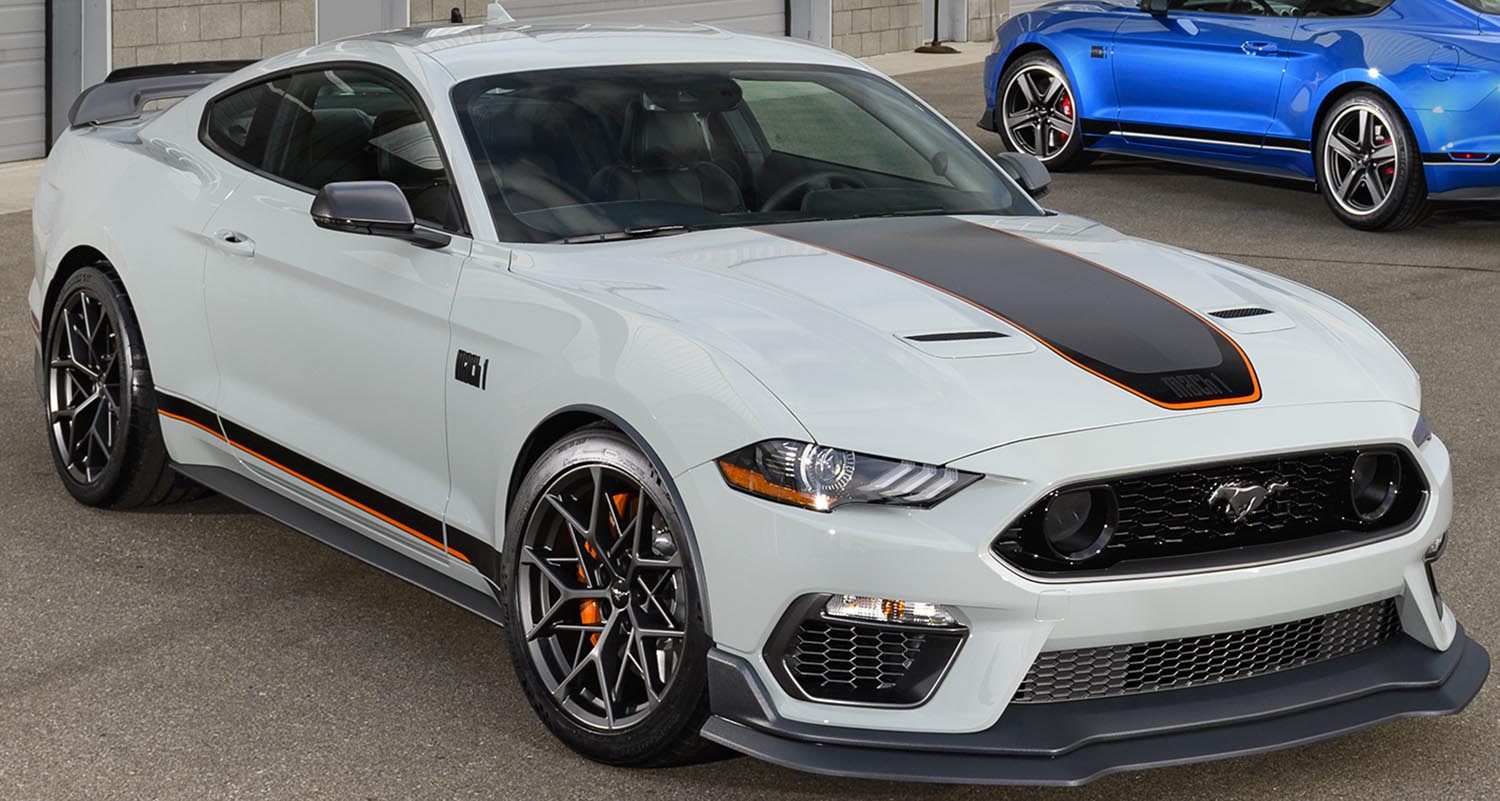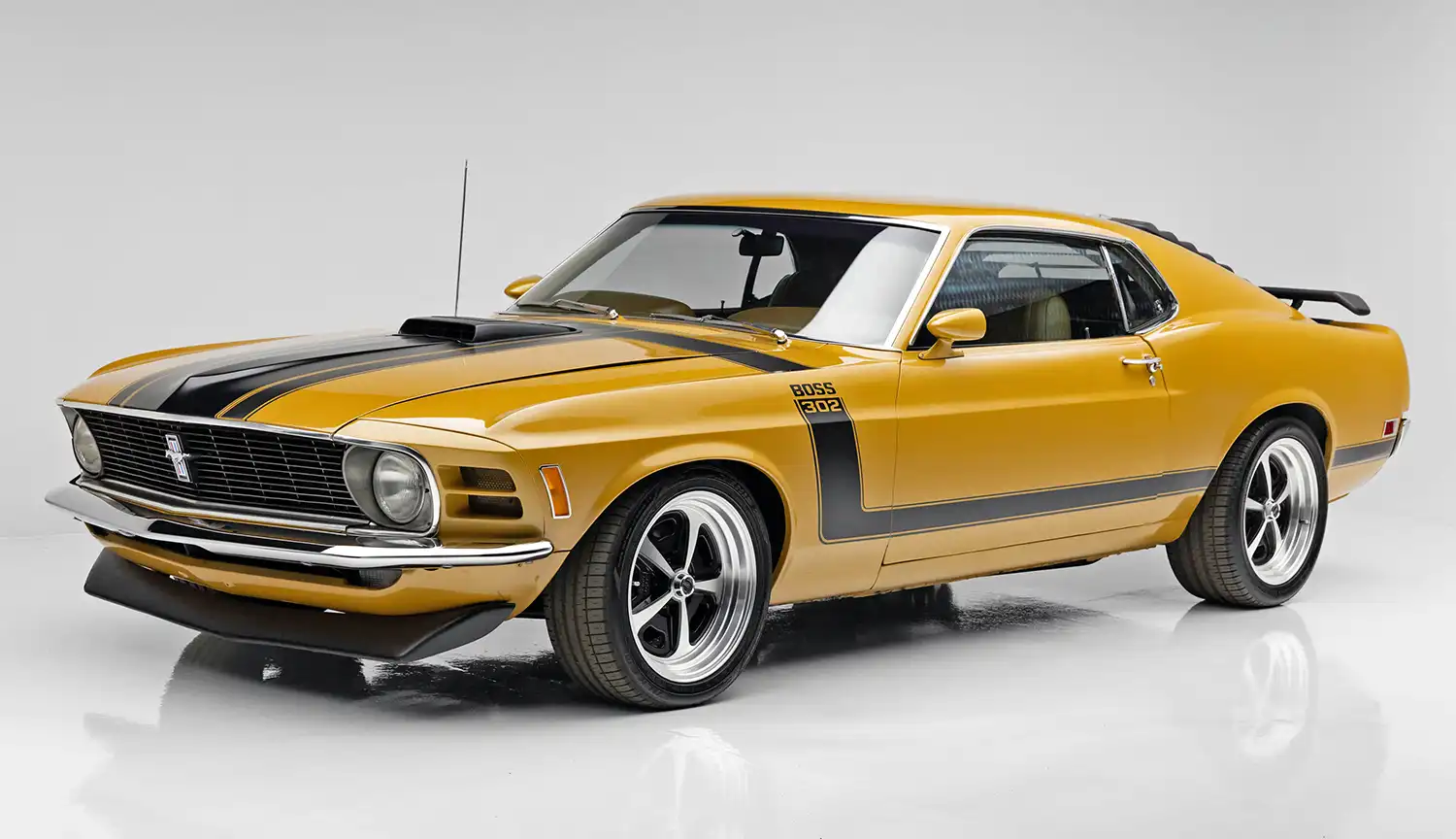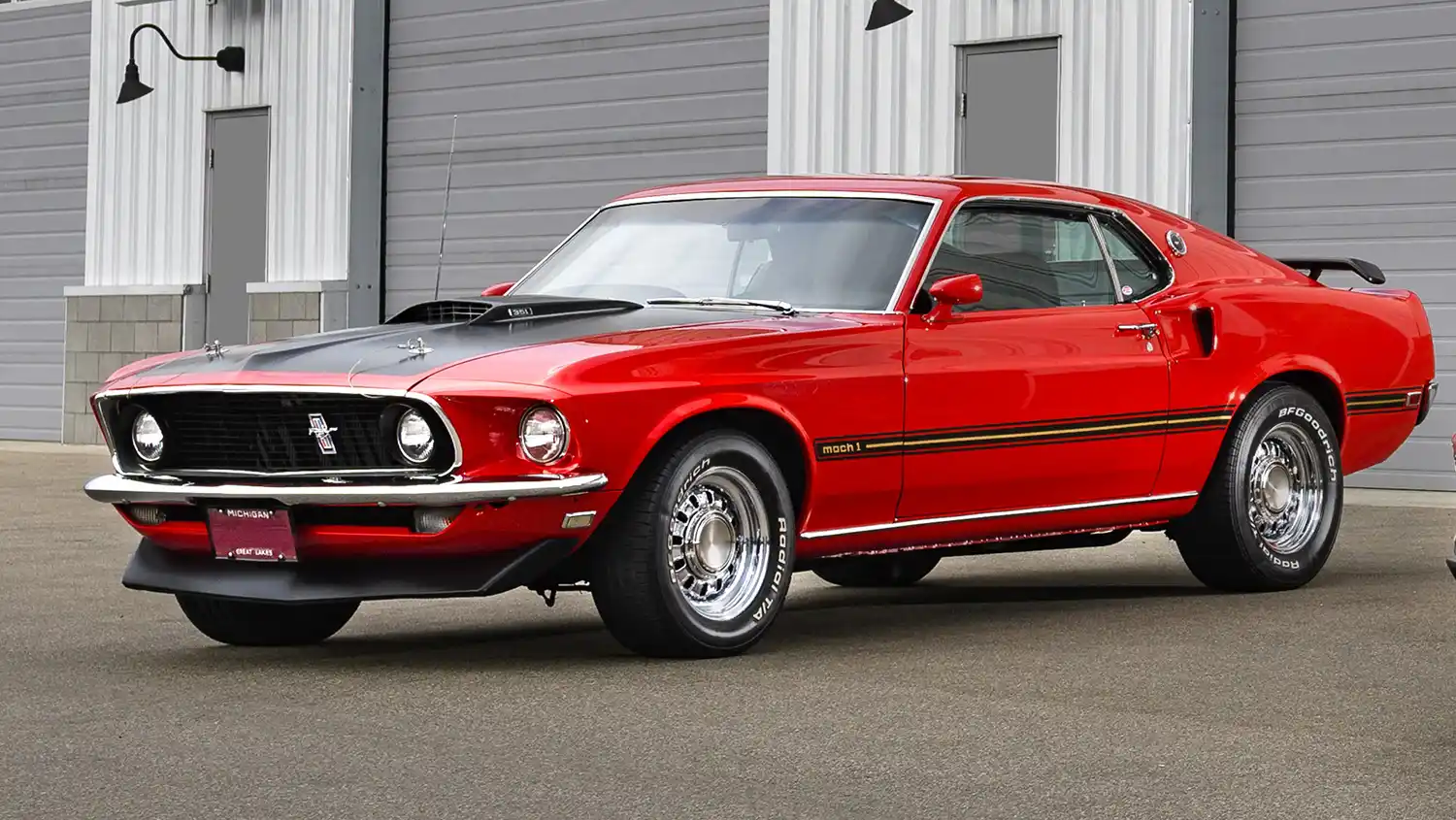
The 1969 model year restyle “added more heft to the body” with body length extended by 3.8 inches (97 mm) (the wheelbase remaining at 108 inches), width increased by almost half an inch, and the Mustang’s “weight went up markedly too”. 1969 was the first model to use quad headlamps placed both inside and outside the grille opening. The corralled grille pony was replaced with the pony and tribars logo, set off-center to the drivers side. The car was longer than previous models and sported convex rather than concave side panels. The fastback body version was renamed Sportsroof, styled as SportsRoof in Ford’s literature.

The 1969 model year saw the introduction of the Mach 1, with a variety of powerplants options and many new styling and performance features. Distinctive reflective striping was placed along the body sides, with a pop-open gas cap, dual exhausts, matte-black hood with simulated air scoop and NASCAR-style cable and pin tiedowns. It used steel wheels with bold-lettered Goodyear Polyglas tires. A functional “shaker” hood scoop – which visibly vibrated by being attached directly to the air cleaner through a hole in the hood – was available, as were tail-mounted wing and chin spoilers and rear window louvered blackout shade. The Mach 1 featured a deluxe interior with simulated wood trim, high backed seats, extra sound deadening, remote sports mirrors and other comforts. The Mach 1 proved popular with buyers with 72,458 cars sold through 1969.
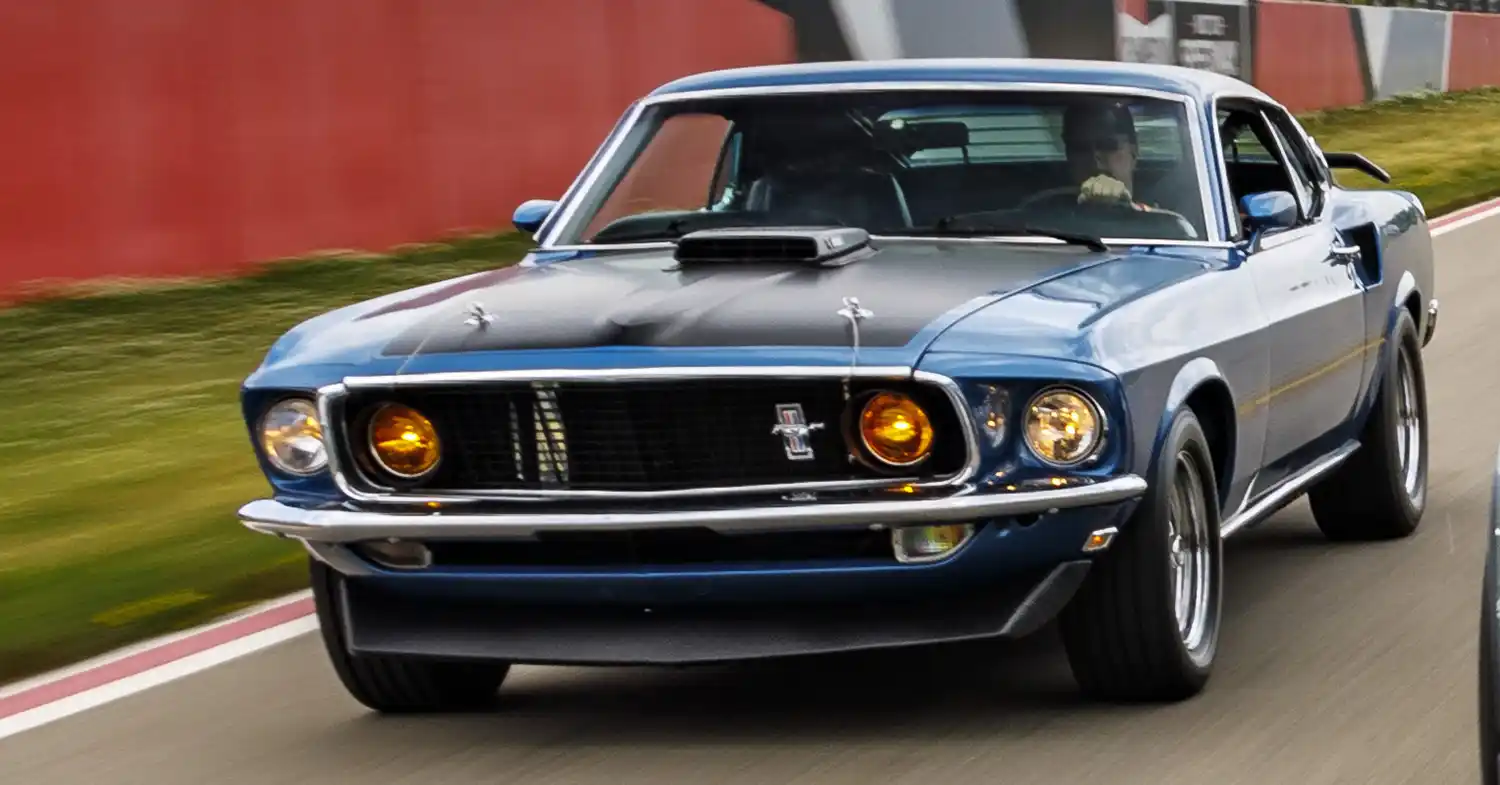
The Boss 302 was created to meet Trans Am rules and featured distinctive hockey-stick stripes, while the understated Boss 429 was created to homologate the Boss 429 engine (based on the new Ford 385 series engine) for NASCAR use. The two Boss models received fame on the track and street and to this day they still demand premium pricing for their pedigree. 1628 Boss 302’s and 859 Boss 429’s were sold through 1969 – making these vehicles somewhat rare.

A new “luxury” model became available starting for 1969, available in only the hardtop body style. The ‘Grande’ featured a soft ride, 55 pounds (24.9 kg) of extra sound deadening, as well as deluxe interior with simulated wood trim. It was popular with buyers with 22182 units sold through 1969.
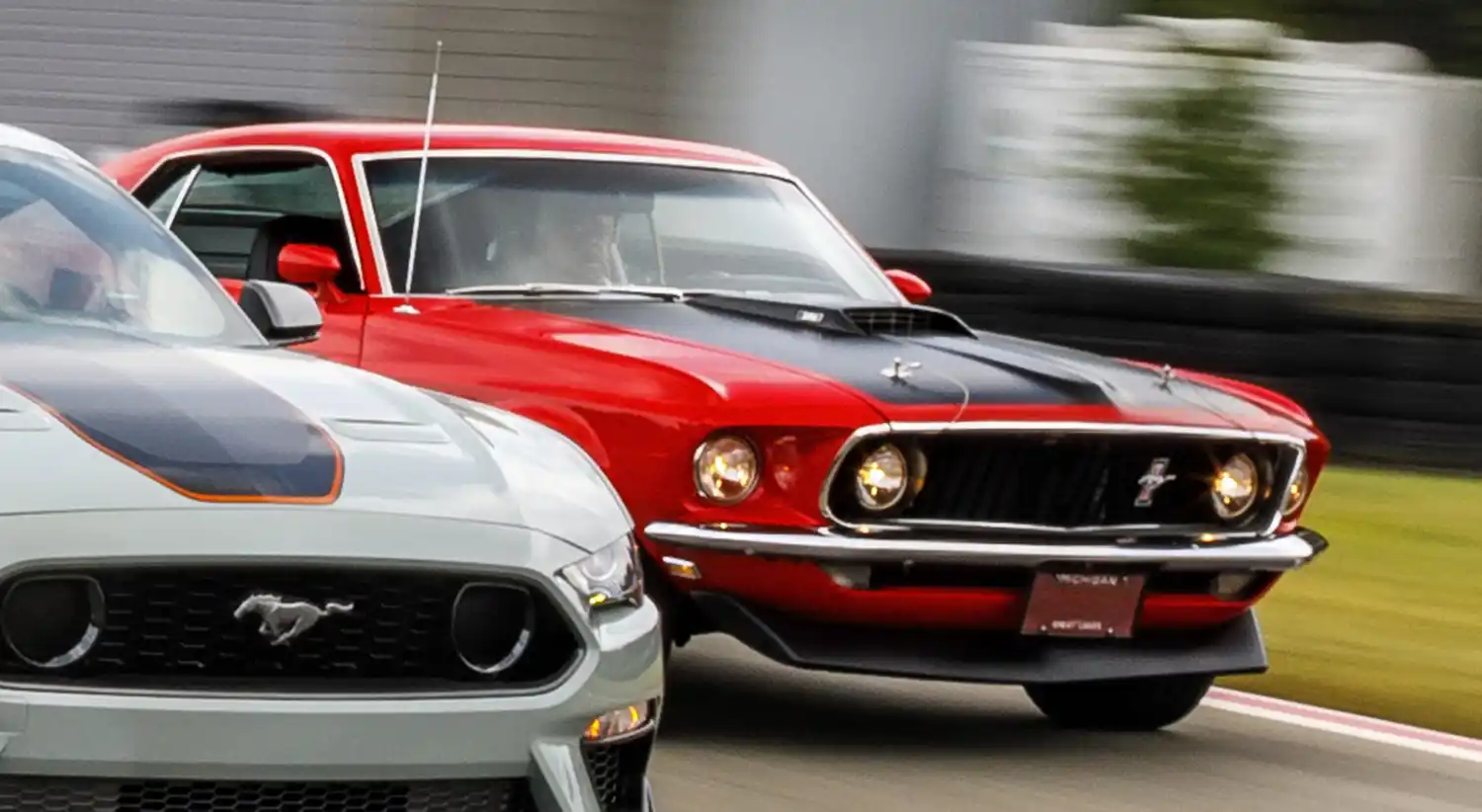
Amidst other special editions, the 1969 Mustang E was offered for those desiring high mpg. The 1969 Limited Edition Mustang E was a rare (about 50 produced) fastback special model designed for economy. It came with a six-cylinder engine (250 cu in (4.1 L)), a high stall torque converter for the standard automatic transmission and a very low, 2.33:1 rear axle ratio. Mustang E lettering on the rear quarters identified the special Mustang E. Air conditioning was not available on the ‘E’ model.
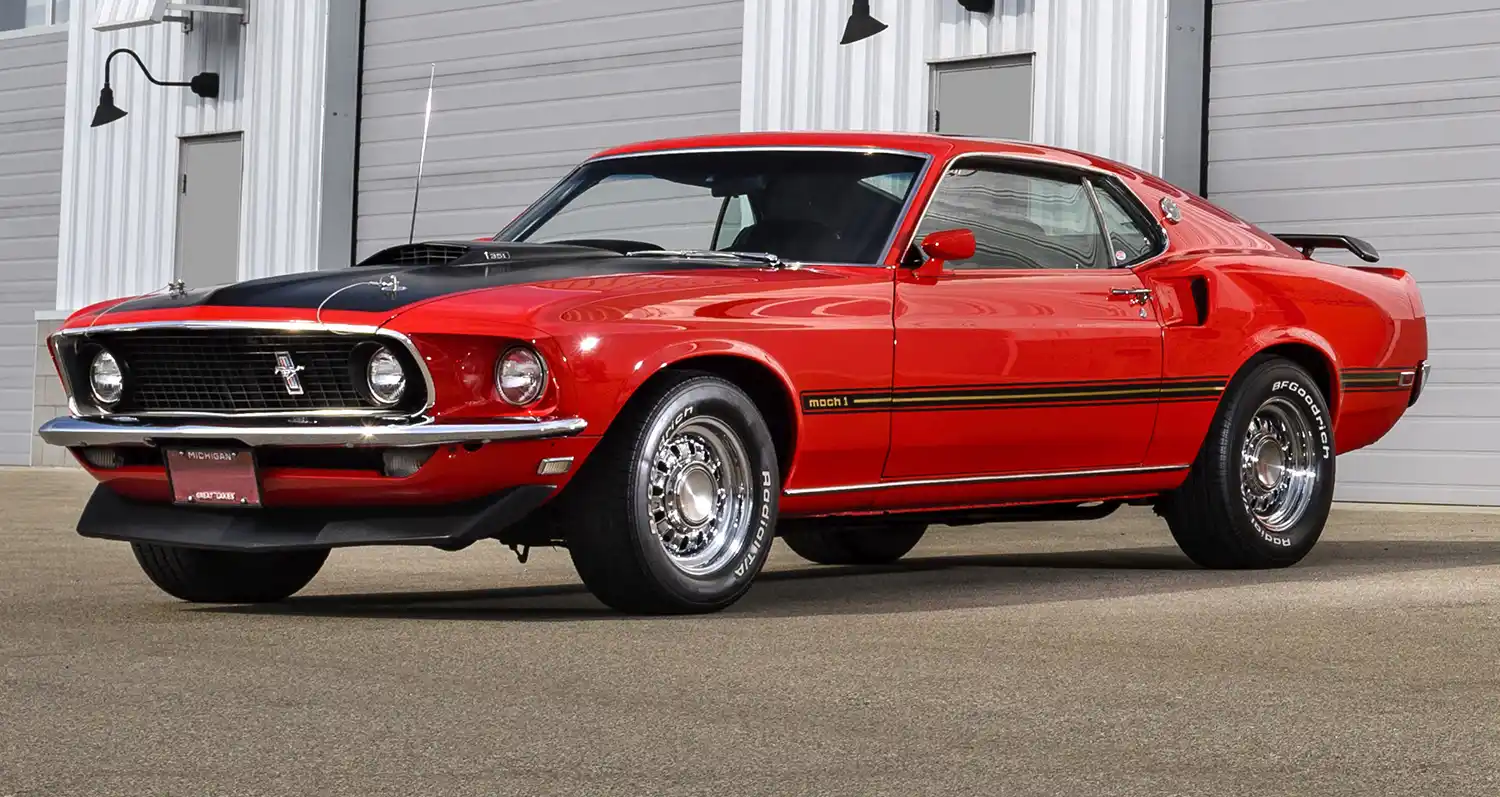
The Mustang GT was discontinued in 1969 due to poor sales versus the success of the new Mach 1 with only 5396 GT models sold that year.
A new 250 cu in (4.1 L) Thriftpower I6 engine with 155 hp (116 kW; 157 PS) filled the gap between the existing 200 cu in (3.3 L) Thriftpower I6 and the V8 engine line-up.

Although 1969 continued with many of the same basic V8 engines available on 1968 models, notably a now revised 302 cu in (4.9 L) Windsor engine with 220 hp (164 kW; 223 PS), the 390 cu in (6.4 L) FE with 320 hp (239 kW; 324 PS) and the recently launched 428 cu in (7.0 L) Cobra Jet engine (with or without Ram-Air) with an advertised 335 hp (250 kW; 340 PS), a variety of revised options and changes were introduced to keep the Mustang fresh and competitive including a new performance V8 available in 250 hp (186 kW; 253 PS) or 290 hp (216 kW; 294 PS) tune known as the 351 cu in (5.8 L) Windsor (351W), which was effectively a stretched and revised 302 cu in (4.9 L) to achieve the extra stroke.
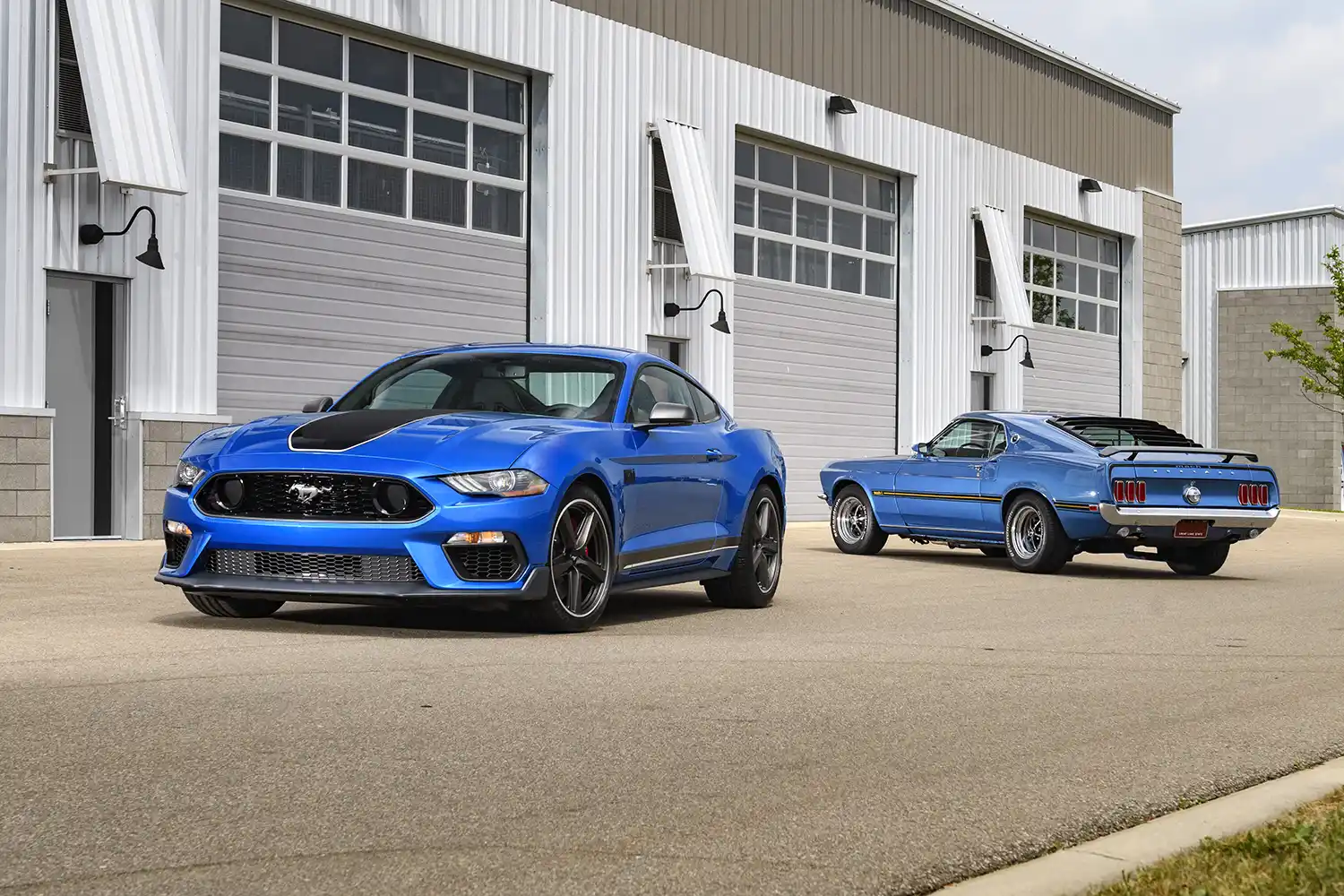
The 428 cu in (7.0 L) Cobra Jet engine continued unchanged in the 1969 and 1970 model years and continued to be advertised at just 335 hp (250 kW; 340 PS) despite being closer to 410 hp (306 kW; 416 PS). However, whenever a V or W axle was ordered (3.90 or 4.30 locking ratio) on any Cobra Jet Mustang, this kicked in various engine improvements which were designed to make the engine more reliable on the strip. These improvements included an engine oil cooler (which resulted in AC not remaining an option), stronger crankshaft and conrods and improved engine balancing and was named the ‘Super Cobra Jet’. On the order form, these improvements were later referred to as ‘Drag Pack’. Today, these models request a premium price despite offering no notable performance increase other than provided by their unique axle ratios.
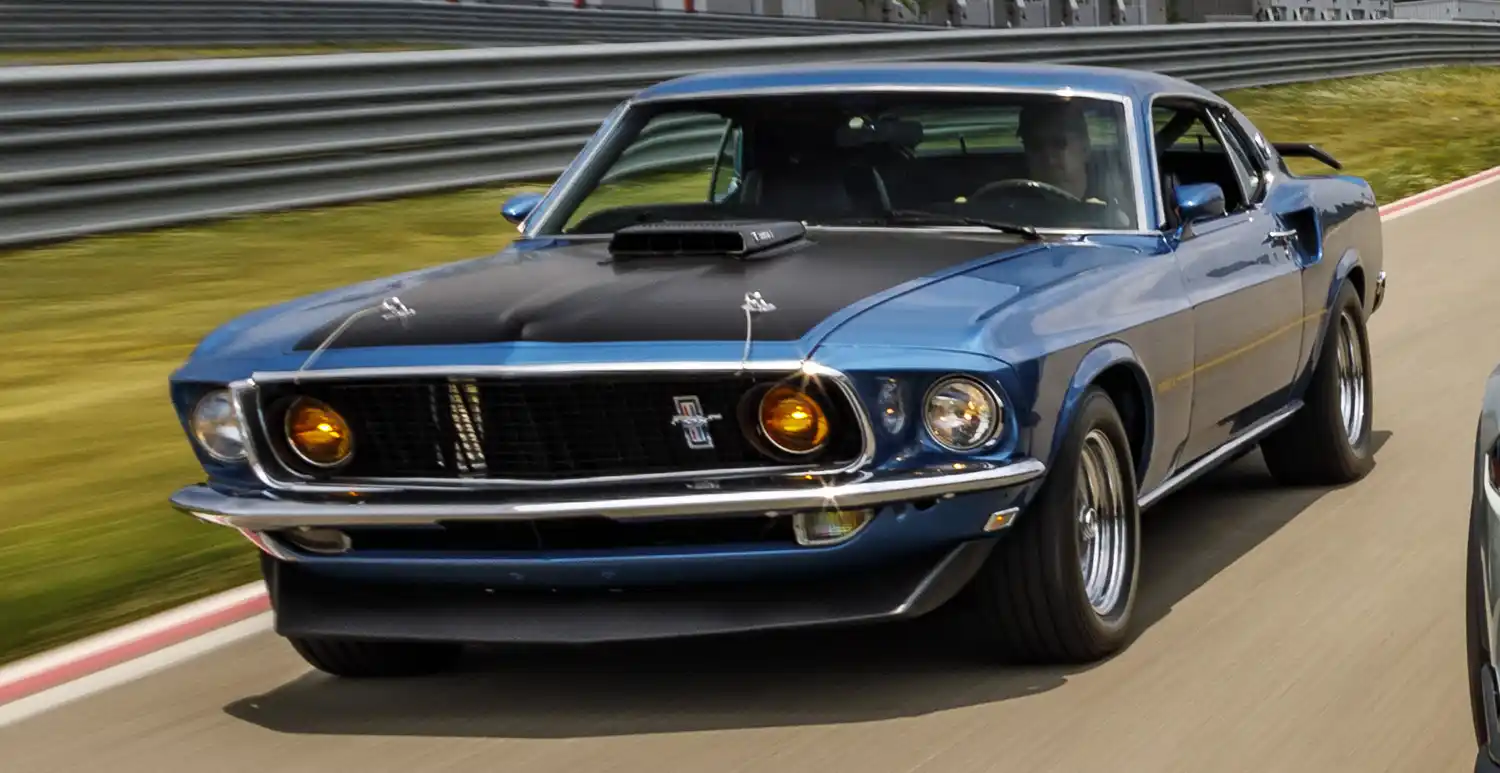
The 1969 Shelby Mustang was now under Ford’s control and made to look vastly different from regular production Mustangs, despite now being built inhouse by Ford. The custom styling included a fiberglass front end with a combination loop bumper/grille that increased the car’s overall length by 3 inches (76 mm), as well as five air intakes on the hood. Two models were available, GT-350 (with a 351 cu in (5.8 L) Windsor (351W) producing 290 hp (216 kW; 294 PS)) and GT-500 (with the 428 cu in (7.0 L) Cobra Jet engine), in both sportsroof or convertible versions. All 1969-1970 Shelby Mustangs were produced in 1969. Because of dwindling sales, the 789 remaining 1969 cars were given new serial numbers and titled as 1970 models. They had modified front air dam and a blackout paint treatment around the hood scoops.

The 1970 model year Mustangs were restyled to be less aggressive and therefore returned to single headlamps which were moved to the inside of the grille opening with ‘fins’ on the outside of the grille sides. Some felt the aggressive styling of the 1969 model hurt its sales and this view prompted the headlamp revisions and simplification of other exterior styling aspects. It’s worth noting though that 1969 model year sales exceeded those of 1970. The rear fender air scoops were removed and the taillight panel was now flat instead of concave as seen on 1969 models. The interior options remained mostly unchanged.

1970 model year saw the previous 351W V8 engine options replaced with a new 351 cu in (5.8 L) Cleveland (351C) V8 in either 2V (2-venturi carburetor) or 4V (4-venturi carburetor) versions. Though some early 1970 mustangs, built in 1969, had the 351W. The 351C 4V (M code) engine featured 11.0:1 compression and produced 300 bhp (224 kW; 304 PS) at 5400 rpm. This new performance engine incorporated elements learned from the Ford 385 series engine and the Boss 302, particularly the poly-angle combustion chambers with canted valves and the thin-wall casting technology.

Ford made 96 ‘Mustang Twister Special’ cars for Kansas Ford dealers in late 1969. The Twister Specials were Grabber Orange Mach 1s with special decals. Ford also made a few ‘Sidewinders’, which were built in Dearborn, shipped to Omaha, and sold in Iowa and Nebraska. They were available in Grabber Green, Grabber Blue, Calypso Corral, and Yellow. The stripes came in the trunk to be installed by dealers.
This article is licensed under the GNU Free Documentation License(Wikipedia)
